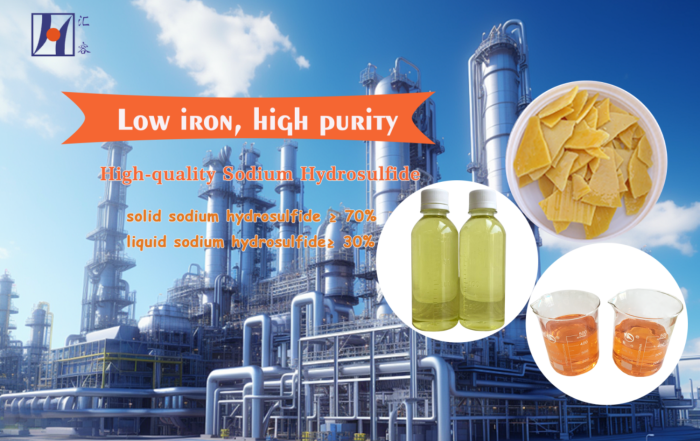Sodium hydrosulfide (chemical formula NaHS), as an important inorganic compound, has a place in industrial production with its unique chemical properties and wide application fields. This article will introduce in detail what should be paid attention to when storing and transporting sodium hydrosulfide at high temperatures?
1. What Should Be Paid Attention To When Storing Solid Sodium Hydrosulfide In Summer?
- (1) Moisture-proof storage: Sodium hydrosulfide is hygroscopic, so avoid humid environments when storing it. It can be placed in a dry place and use sealed containers or bags.
- (2) Avoid direct sunlight: Sunlight exposure may cause damage to the performance of sodium hydrosulfide, and direct exposure to sunlight should be avoided.
- (3) Avoid high temperature: High temperature environment may affect the structure and function of sodium hydrosulfide. It should be avoided to place it in high temperature areas. It is best to store it at room temperature.
- (4) Regular inspection: During storage, regularly check whether there are abnormal changes in sodium hydrosulfide, such as agglomeration, discoloration, etc. If abnormalities are found, appropriate measures should be taken.
- (5) Avoid contamination: Before operating sodium hydrosulfide, make sure that the tools and containers used are clean to prevent contamination.
- (6) Safe operation: When operating sodium hydrosulfide, wear appropriate protective equipment, such as goggles and gloves, to prevent injury from contact with the substance.
- (7) Storage facilities: Store in a cool, ventilated warehouse, away from fire and heat sources, and use explosion-proof lighting and ventilation facilities.
- (8) Emergency preparation: The storage area should be equipped with leak emergency treatment equipment and appropriate containment materials so that quick action can be taken in the event of an accident.
- (9) Isolation storage: It should be stored separately from oxidants, acids, edible chemicals, etc. to avoid potential chemical reactions.
- (10) Safety signs: The storage area should have clear safety signs and warning signs to remind personnel to pay attention to potential dangers.
2. What Should Be Paid Attention To When Storing Liquid Sodium Hydrosulfide In Hot Summer?
- (1) High temperature protection
Avoid exposing liquid sodium hydrosulfide to high temperatures, as high temperatures may accelerate its decomposition and produce harmful gases. - (2) Anti-corrosion
Use corrosion-resistant materials to store and transport sodium hydrosulfide liquid to avoid reactions with metals - (3) Anti-leakage
Ensure that the container is well sealed to prevent leakage. If leakage occurs, take immediate measures to prevent contamination. - (4) Ventilation
Maintain good ventilation in the operating area to reduce the accumulation of harmful gases. - (5) Professional training
Ensure that operators receive training on the hazards and safe operation of sodium hydrosulfide.
3. What Should Be Paid Attention To When Transporting Sodium Hydrosulfide In Hot Summer?
- (1) Anti-high temperature
Since sodium hydrosulfide may be unstable at high temperatures, direct exposure to the sun should be avoided during transportation, and ensure that the transportation vehicle has appropriate sunshade measures. - (2) Anti-leakage
Ensure that all containers are well sealed to prevent leakage during transportation. - (3) Isolation
It is strictly forbidden to mix and transport with oxidants, acids, edible chemicals, etc. to prevent chemical reactions. - (4) Ventilation
The transportation vehicle should maintain good ventilation to reduce the heat generated by the decomposition of sodium hydrosulfide. - (5) Emergency preparation
Transportation personnel should be familiar with emergency measures, including leak handling and first aid procedures. - (6) Vehicle maintenance
Ensure that the exhaust pipe of the transport vehicle is equipped with a flame arrester and avoid using mechanical equipment and tools that are prone to sparks.




